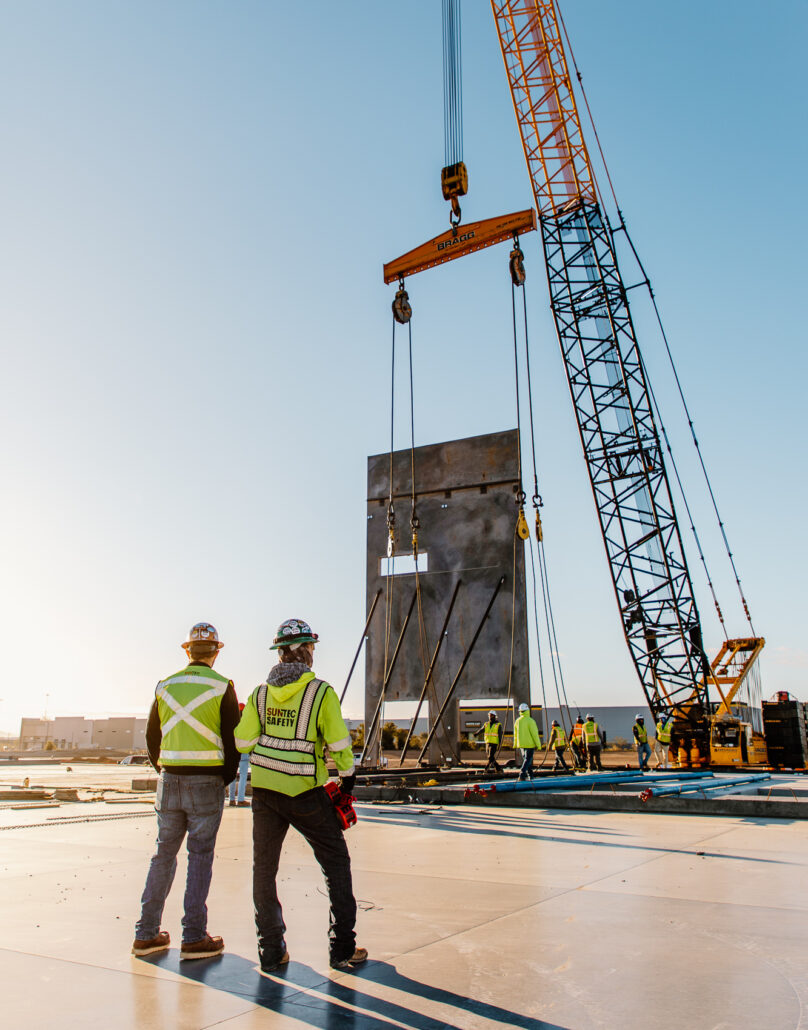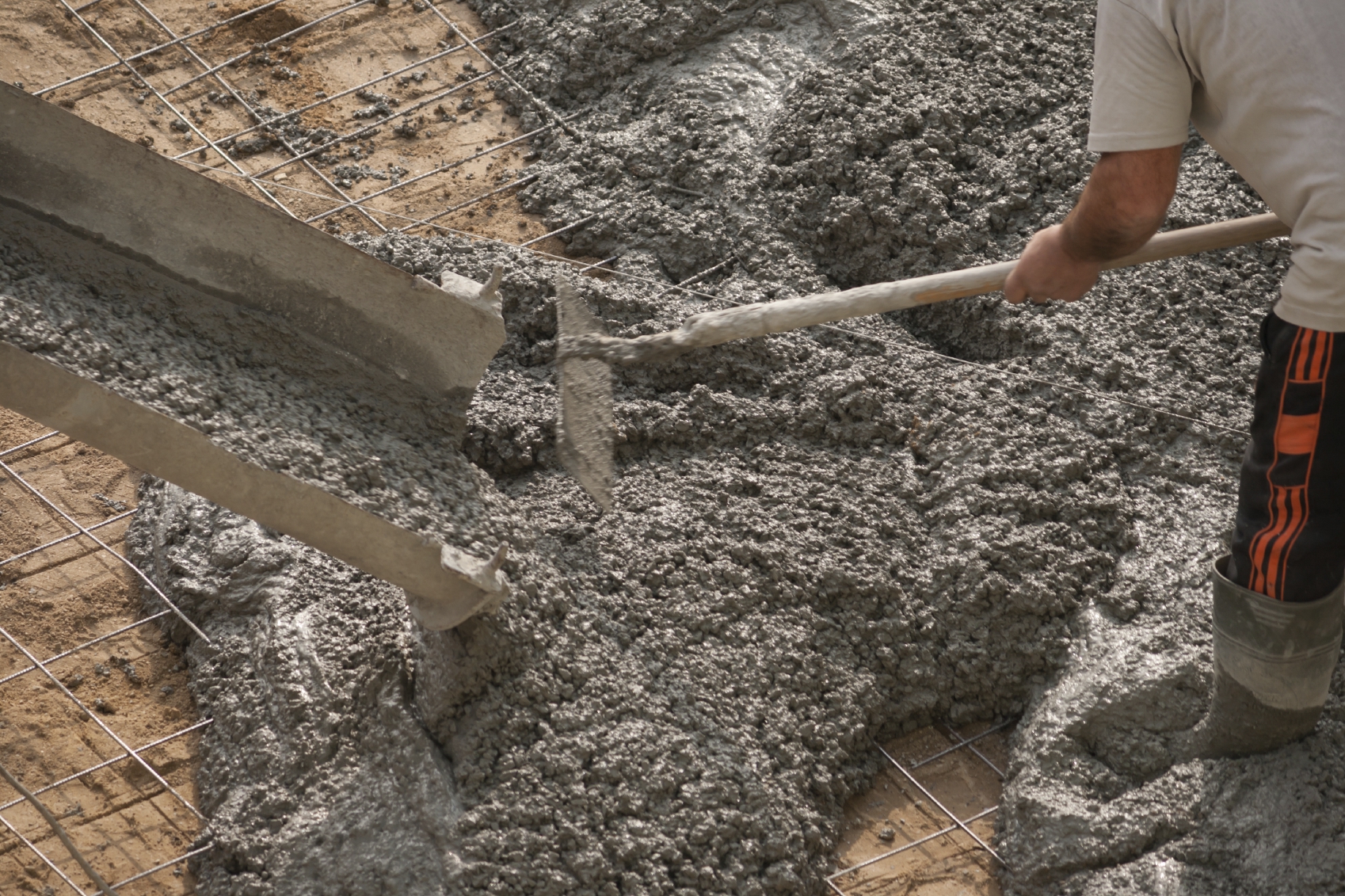The Essential Duty of Concrete Foundation in Structural Stability and Durability
When it pertains to constructing a residential property, the foundation is much more essential than you might believe. Concrete structures give unequaled stamina and resilience, guaranteeing your structure can hold up against various ecological obstacles. Without a solid base, you take the chance of potential concerns like shifting or fracturing, which can compromise security and worth. Understanding the subtleties of concrete structures might be the key to protecting your financial investment for many years ahead. What should you think about following?
Recognizing the Value of Concrete Foundations
Concrete structures are essential to the overall stability of any type of framework, as they offer the essential support needed to withstand different tons and environmental conditions. When you consider developing a home or a business area, the foundation is the initial thing you should think about. It works as an obstacle against moisture, protecting your home from water damage. A well-placed concrete structure additionally protects against settling and shifting, which can result in fractures in wall surfaces and floorings. You'll desire to assure that the foundation is properly made and strengthened, as this impacts the long life of your structure. Additionally, a solid foundation can boost energy performance by lowering air leaks. Remember, disregarding the value of a concrete foundation can bring about expensive repairs down the line. Spending in a high quality structure upfront is essential for the stability and resilience of your framework.
Advantages of Concrete Foundations for Structural Honesty
While lots of factors contribute to a building's structural stability, concrete foundations supply unmatched sturdiness and toughness. You'll appreciate that concrete can hold up against severe weather problems, withstanding both dampness and temperature changes. This strength indicates your framework is much less likely to experience cracking or changing gradually, which can compromise its safety.Additionally, concrete's intrinsic weight supplies a strong base, avoiding motion during natural events like quakes or floodings. When you pick a concrete foundation, you're also selecting low upkeep; unlike timber, it will not rot or bring in parasites, conserving you money and time in repairs.Moreover, concrete's fire resistance offers added security, guaranteeing your structure can sustain high temperatures without significant damages. Generally, spending in a concrete structure means you're prioritizing the long-lasting stability and integrity of your building, making it a wise option for any type of building task.
Usual Kinds of Concrete Foundations
When it pertains to constructing foundations, comprehending the typical kinds of concrete foundations can aid you make informed choices for your project. The most common kinds consist of slab-on-grade, crawl area, and full basement foundations.A slab-on-grade foundation is an easy, cost-efficient option, where a thick concrete slab is put straight on the ground. This type functions well in warm environments, as it reduces warmth loss.Crawl room foundations raise the home slightly above ground, permitting ventilation and access to plumbing and electrical systems. This style can assist prevent wetness issues.Full basement foundations offer additional living or storage space while giving outstanding architectural support. They require even more excavation and are typically utilized in chillier climates to stop frost heave.
Elements to Take Into Consideration When Creating a Concrete Structure

Best Practices for Installing Concrete Foundations
When you're mounting a concrete structure, proper site prep work is necessary to ensure stability (Concrete Contractors Rancho Cucamonga). You'll also require to comprehend support strategies to enhance toughness and toughness. Do not overlook the curing procedure, as it plays a fundamental role in attaining a strong structure.
Site Preparation Value
Although it may appear uncomplicated, appropriate site preparation is vital for assuring a strong and durable concrete structure. Begin by getting rid of the location of any kind of debris, vegetation, or natural product that could jeopardize the structure's integrity. Next, assess the soil kind and compaction; you may need to excavate or include materials to develop a secure base. Level the ground to guarantee even weight circulation and stay clear of working out concerns later. Installing proper drainage systems is also important to avoid water build-up, which can deteriorate the foundation over time. Mark out the structure's dimensions properly to guide the putting procedure. By complying with these actions, you'll establish the phase for a successful concrete structure that stands the examination of time.
Reinforcement Strategies Discussed
When the website is effectively prepared, the next action in ensuring a durable concrete structure includes executing reliable support methods. You should begin by using steel rebar, which gives tensile strength and assists avoid fracturing. Lay the rebar in a grid pattern, ensuring it's raised utilizing spacers to preserve proper coverage. In addition, take into consideration making use of cord mesh for extra assistance, especially in locations based on hefty lots. Don't neglect to tie the rebar crossways firmly with wire. For bigger structures, fiber reinforcement can enhance toughness, lowering the danger of shrinkage fractures. Constantly comply with neighborhood building ordinance and guidelines to ensure compliance. By using these reinforcement strategies, you'll considerably improve your structure's strength and long life, laying a strong groundwork for your framework.
Healing Process Fundamentals
To ensure your concrete structure cures effectively, it's essential to maintain ample wetness and temperature problems instantly after putting. Beginning by covering the surface area with a wet burlap or plastic bed linen to maintain wetness. This maintains the concrete hydrated, preventing cracks and guaranteeing stamina. You need to additionally monitor the temperature level; optimal healing problems are between 50 ° F and 90 ° F. If it's as well warm, mist the surface area frequently to avoid quick dissipation. For winter, think about using shielding coverings to maintain heat. Purpose for a curing period of at the very least seven days, as this is crucial for optimum stamina advancement. By complying with these finest methods, you'll boost your foundation's sturdiness and durability, guaranteeing architectural integrity for several years ahead.
Maintenance of Concrete Structures for Longevity
To maintain your concrete structure solid and long lasting, normal evaluations are important. You ought to additionally assure efficient drain solutions are in location to protect against water damages. If you identify any cracks, resolving them quickly will save you from larger troubles down the line.

Routine Inspections and Evaluations
While normal evaluations and analyses may appear like a task, they're necessary for preserving the stability of your concrete foundation. By routinely checking for fractures, shifts, or indicators of wear, you can capture potential issues prior to they intensify right into expensive fixings. Try important link to find any kind of water pooling around the structure or uncommon settling, as these can signal underlying issues. It's additionally a good idea to monitor any kind of modifications in your home's structure, like doors that stick or windows that don't open efficiently. Keeping a record of your examinations helps track changes gradually, enabling proactive maintenance. Ultimately, these analyses assure your structure continues to be secure, supporting the durability and safety and security of your whole structure. Do not neglect this critical facet of homeownership!
Effective Drainage Solutions
Routine evaluations can expose concerns like water drainage problems that may compromise your concrete foundation's stability. To avoid water buildup, guarantee your gutters and downspouts direct water away from the structure. Installing French drains can properly reroute surface area and groundwater, reducing pressure on your foundation wall surfaces. Additionally, grading the dirt large patio pavers around your home assists assure that water streams away, instead of merging near your foundation.Consider using sump pumps in areas susceptible to flooding, as they proactively remove excess water. Regularly inspect for obstructions in water drainage systems and clear them quickly. You'll protect your structure's stability and durability by taking these proactive steps. Remember, effective water drainage solutions are necessary for preserving a solid, long lasting concrete structure.
Motivate Crack Fixes
When you discover cracks in your concrete foundation, resolving them promptly is vital for maintaining its longevity. Little cracks can quickly progress into bigger problems, endangering the structural stability of your home. Consistently examine your structure for indications of damage, such as straight or vertical splits. If you detect any, do not wait-- fix them instantly. You can use epoxy injections or concrete patching compounds, which are reliable for sealing splits. Always follow the maker's directions and consider seeking advice from a professional for significant damage. Remember, prompt fixings not just improve your foundation's toughness however also save you cash over time by stopping a lot more comprehensive repairs down the line. Keep positive, and your structure will continue to be strong and secure.
Attending To Typical Issues With Concrete Structures
Concrete structures can face different issues with time, making it important to recognize and address them without delay. One of one of the most common troubles is breaking, which can happen due to temperature fluctuations or resolving dirt. If you discover fractures, it's vital to analyze their dimension and deepness; tiny cracks can commonly be sealed, while bigger ones might call for specialist evaluation.Water breach is an additional significant concern. Excess wetness can cause mold and mildew development and structural damage. Warranty correct drain around your structure to alleviate this danger. Furthermore, try to find indications of moving or bowing walls, as this can indicate underlying concerns with your structure's stability.Regular examinations are basic to catch these issues early. If you spot any kind of worrying indications, don't be reluctant to consult permeable concrete mix design a structure specialist. By staying proactive, you can preserve the integrity and long life of your concrete foundation, guaranteeing your home stays safe and protected.
Regularly Asked Questions
Just How Does Dirt Type Impact Concrete Foundation Performance?
Soil type considerably impacts concrete structure efficiency. If you have actually obtained expansive clay, as an example, it can create moving and cracking. Sandy soil could bring about clearing up. Comprehending your dirt assists assure a steady structure.
Can Concrete Foundations Be Fixed if Harmed?
Yes, you can fix broken concrete foundations. Depending upon the extent of the damages, strategies like epoxy injection or slab jacking can recover stability. It's best to seek advice from a specialist for reliable solutions.
What Is the Normal Lifespan of a Concrete Structure?
A concrete foundation normally lasts 30 to 100 years, relying on factors like soil conditions, environment, and upkeep. You'll desire to keep an eye on it to guarantee it stays in excellent form throughout its lifespan.
Are There Option Materials to Concrete for Foundations?
Yes, there are choices to concrete for foundations, like steel, lumber, or perhaps recycled products. Each option has one-of-a-kind advantages and drawbacks, so you need to consider your project's certain requirements when selecting the right material.
How Does Environment Effect Concrete Foundation Sturdiness?
Environment substantially impacts concrete structure resilience (WCGE commercial concrete). Extreme temperatures, wetness, and freeze-thaw cycles can damage the product, causing fractures and structural concerns. You need to think about regional climate conditions when preparing your foundation to ensure lasting performance